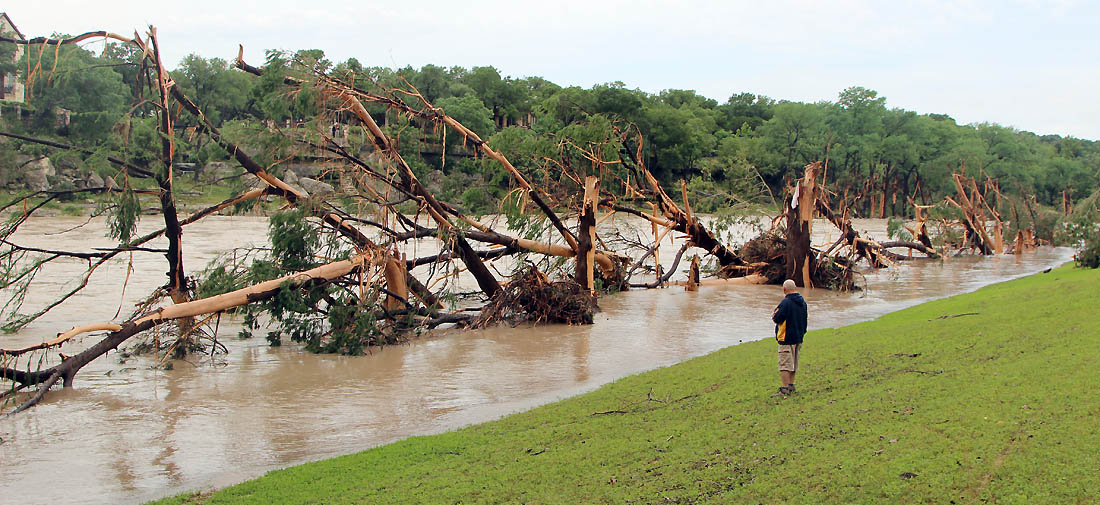
The good news is, the best thing you can do for your trees and river banks is to leave them alone. Please watch this video from Blanco Valley River Restoration Project and read this helpful information from the Texas Forest Service, Hays County Master Naturalists and Steve Nelle.
Video:
Watch, Learn and Share with your Neighbors:
Don’t Give up on your Trees – Let the Blanco River Heal Itself
First Steps: (Download these steps here)
-Compiled from conversations with the Texas Forest Service
- The good news: The best thing you can do for your trees and river bank is to leave them alone. Remove only those items that are a safety hazard. Some trees may recover in the right conditions. You’ll save a lot of time and money while helping the recovery of vegetation and the river.
- Minimize the use of heavy equipment around trees and especially along your river bank. The weight of equipment will compact saturated soil and tree roots beneath the surface, making it more difficult for the trees and the river bank to recover. Trees have a huge root area, extending 23 times the length of branches or canopy. If you must use heavy equipment around trees, protect the area with 68”of mulch, topped with plywood if possible.
- Leave damaged trees and woody debris in place along the river bank unless they pose a safety or structural threat. For now, do not burn debris, saw it up, or remove it. The wood helps to stabilize banks and slow water, and new plants will establish themselves in the debris piles. Even damaged trees will help hold the soil in place. This is nature’s way to hasten recovery.
- Beware of scammers. Use bonded companies to do your work. If you are trying to save or trim a tree, use a certified area arborist ( http://www.isatexas.com). Be wary of advice to “clean up” the river.
More information for our area will be available soon from the Texas Forest Service as well as next steps to take.
A Message from Hays County Master Naturalist Chapter:
As your friends and neighbors, we are saddened by the disaster that has befallen families and homes along the Blanco. We hope this information will help you and the river heal.
Taking the Long View on Tree and River Recovery
-Steve Nelle, retired, USDA Natural Resources Conservation Service, 5/27/15
- The broken and uprooted cypress can actually be a good thing for the future health and stability of the river
- Leave large and small woody debris in place. Do not burn it or remove it or saw it up in small pieces. The wood helps to dissipate energy, and stabilize banks, channel and floodplain.
- These debris piles is where new plants will establish best. This is nature’s way to hasten recovery.
- Minimize or eliminate tractors and large equipment unless absolutely necessary.
- Do not attempt to hire contractors to repair banks, remove gravel, or alter the channel.
- Be patient – natural recovery processes are very effective when allowed to work.
- Be aggressive about controlling wildlife, especially Axis deer and other exotics that may be grazing or browsing in the riparian zone while it is trying to recover.
- Change our attitude about what is a beautiful riparian area – they are not supposed to look clean and manicured but rather thick with wood and vegetation.
- Take photos now and every 6 – 12 months – repeat photos at fixed point photos to show the recovery process. This will be very meaningful in the future.
From the Texas A&M Forrest Service:
Download

Resources:
After the Storm Flooding – Caring for Damaged Trees
Let the Blanco River Heal Itself
tfsweb.tamu.edu/afterthestorm
tfsweb.tamu.edu/afterthestorm/canmytreebesaved
‘Treeage’ – For Car Damaged Trees
Video: Blanco River Restoration Tips
Photo: Terry Raines

